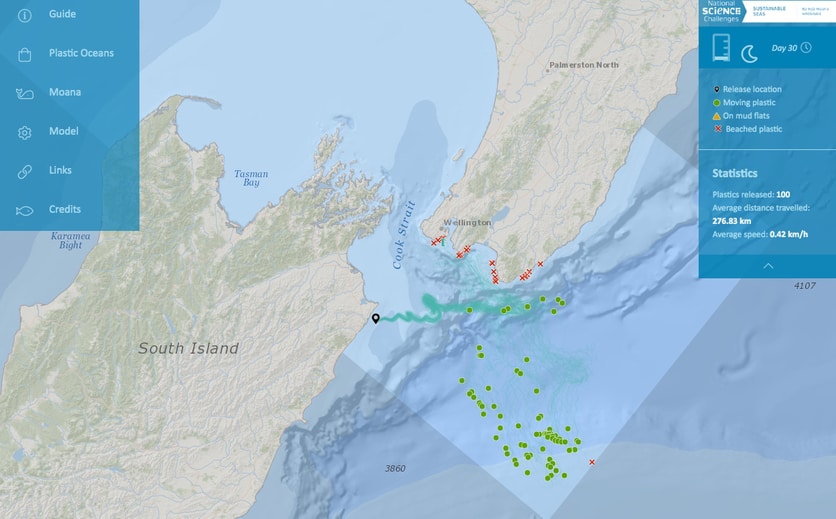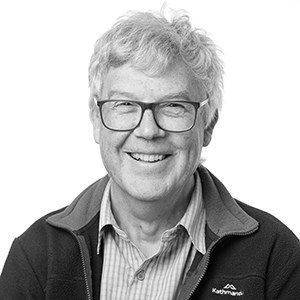Ocean plastic simulator now covers New Zealand’s entire coastline
09 March 2021
An advanced ocean plastic simulator tool first launched in 2019 can now track the movement of virtual plastic pollution along New Zealand’s entire coastline.
The Ocean Plastic Simulator is an ultra-fast, interactive modeling tool developed by researchers at Nelson’s Cawthron Institute and funded by Sustainable Seas National Science Challenge and the Moana Project, with support from NIWA and MetOcean Solutions.
The simulator is primarily an educational tool that was designed to help teach people about the issues rising from plastic waste. The previous version could only track plastic in four locations: Cook Strait, Tauranga Moana, Golden and Tasman Bays, and Hauraki Gulf/Firth of Thames, and research leader Ross Vennell, a physical oceanographer at Cawthron Institute, said the upgrade is a big improvement on the tool’s reach and usability.
“We are so pleased to offer a tool that can now cover all of New Zealand’s marine areas, and this improved version is now also mobile-friendly,” Ross Vennell said.
“The ocean plastic simulator’s main strength is that it is a powerful piece of technology with a very simple, easy to use interface. Anyone, including young children, can use this tool to model what would happen if they dropped virtual plastic pollution into the sea at a specific location along New Zealand’s coastal areas.”
“You can track where the virtual plastic would travel to within a 30 day period, and where it is likely to get washed up on the beach.”
Heni Unwin, a Māori researcher for marine technologies at Cawthron Institute, has been involved in the project since its inception and said the tool’s updates build on its original intent to showcase whakawhanaungatanga or communicate connectivity.
“Coasts and oceans connect through ocean flow and changing something in one area can affect another region,” Heni Unwin said.
“We used plastic to show this connection not only because there is a lot of misunderstanding around where our plastic goes but also as an opportunity to educate on the detrimental effects of plastic and how we can help be kaitiaki of our oceans.”
“We need to be kaitiaki of our oceans because there are many taonga in the ocean such as mammals, seabirds and shellfish and these are all affected by plastic. By expanding the tool’s reach nationwide we can reach communities throughout Aotearoa with this message.”
In addition to the simulation’s application as a plastic tracking tool, Ross Vennell said the particle tracking model that drives it can also be applied in a number of other research fields.

Credit: Brian Yurasits on Unsplash .

Credit: Sustainable Seas National Science Challenge. A screengrab of the tool in action, tracking virtual plastic particles across Cook Strait.

Dr Ross Vennell – Physical Oceanographer at Cawthron
“Cawthron is conducting research and development into how it can be applied to assist with biosecurity monitoring, resource assessments relating to the environmental footprint of aquaculture, finding the origin and movement of wild mussel spat and visualising the dispersion of contaminants from sewerage outfalls,” Ross Vennell said.